Much of the beauty of springtime vineyards comes from cover crops, and the beauty runs deeper than meets the eye. Cover crops play an important role in sustainable farming and supporting a healthy ecosystem in the vineyard.
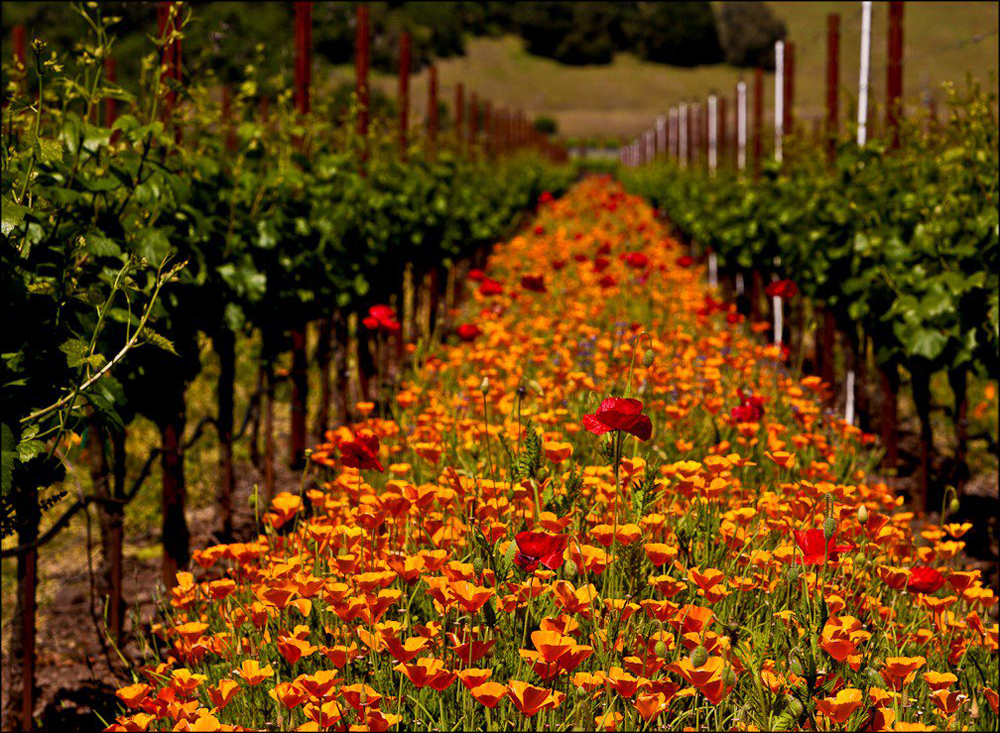
Photo from the Sonoma County Winegrowers
What are Cover Crops?
Cover crops are the various types of vegetation planted between the rows of grapevines. Although this vegetation might look like random weeds, it is actually a well thought out mix of beneficial plants.
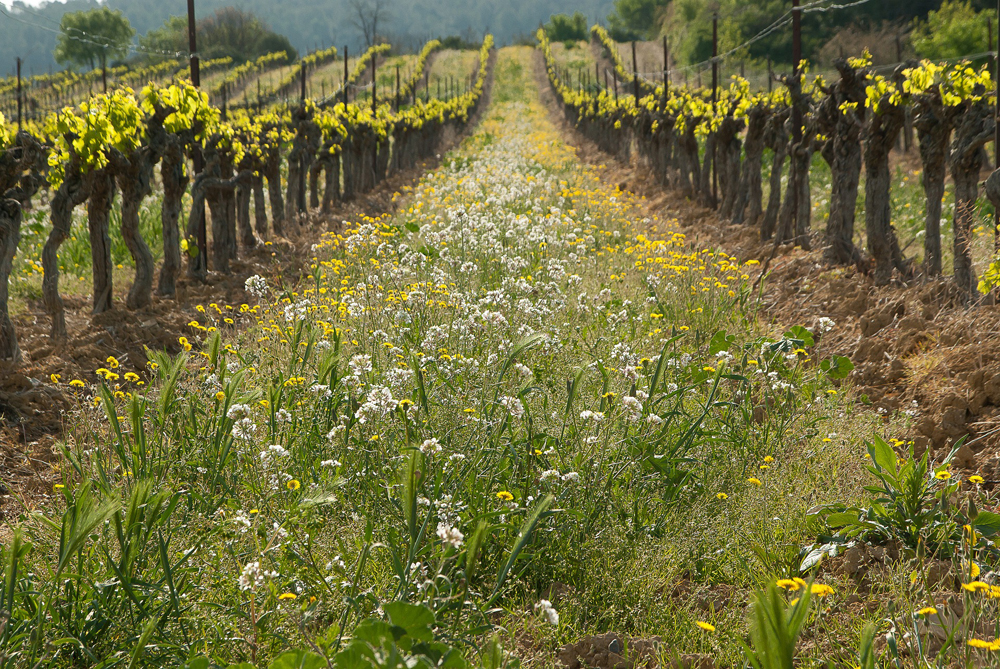
Ecosystem Balance
Many people think of vineyards as monocultures that only grow grapes. But grapes aren’t the only crop grown in our local vineyards.
Cover crops have long been a part of vineyard practices. As the Sonoma County Winegrowers reaches its goal of having 100% sustainably farmed vineyards in the county, the use of cover crops in sustainable farming has become even more important and widespread. Today you almost never see bare soil between the vine rows during the winter and spring months. Instead the rows are planted to cover crops.
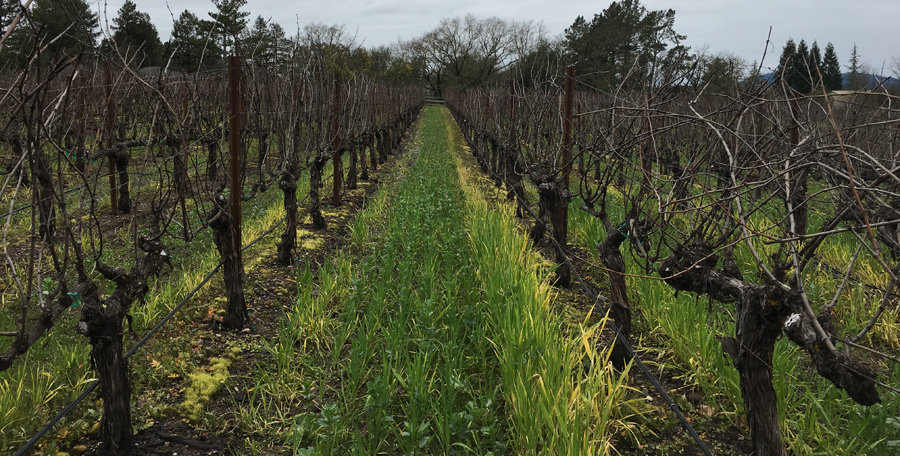
Why are cover crops so important?
Each type of cover crop—and there are several—provides a different benefit to the soil and to the vineyard’s ecosystem. You’ll often see a blend of vegetation planted between the rows.
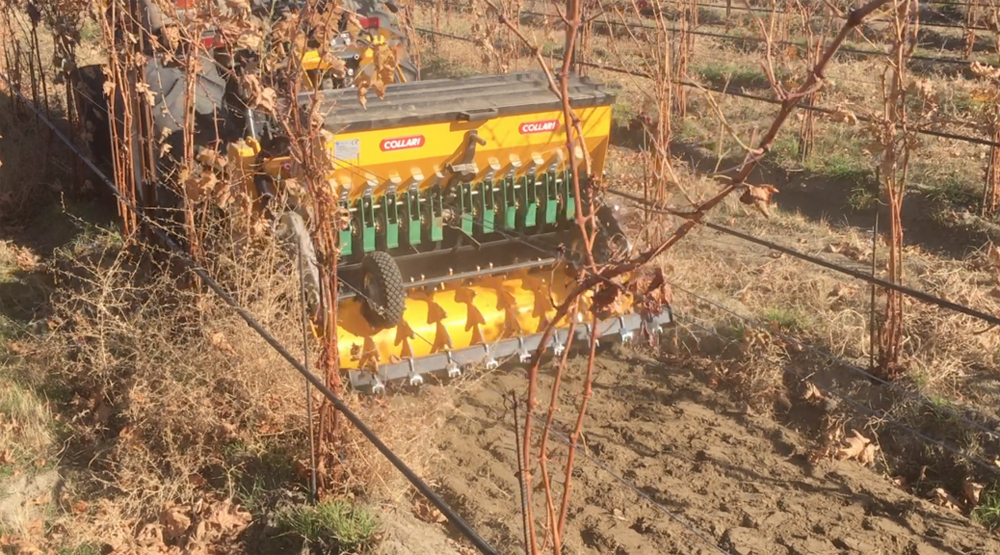
Here are some of the benefits of cover crops:
- Provide organic matter that breaks down in the soil to slowly release nutrients necessary for healthy vine growth
- Suppress weeds
- Increase biodiversity from additional vine friendly micro-flora and fauna
- Prevent soil erosion
- Improve soil structure for water retention and root development
- Provide habitat for beneficial insects
- Allow the soil to hold more moisture from the winter rains
- Permit easier access to vineyards during wet weather
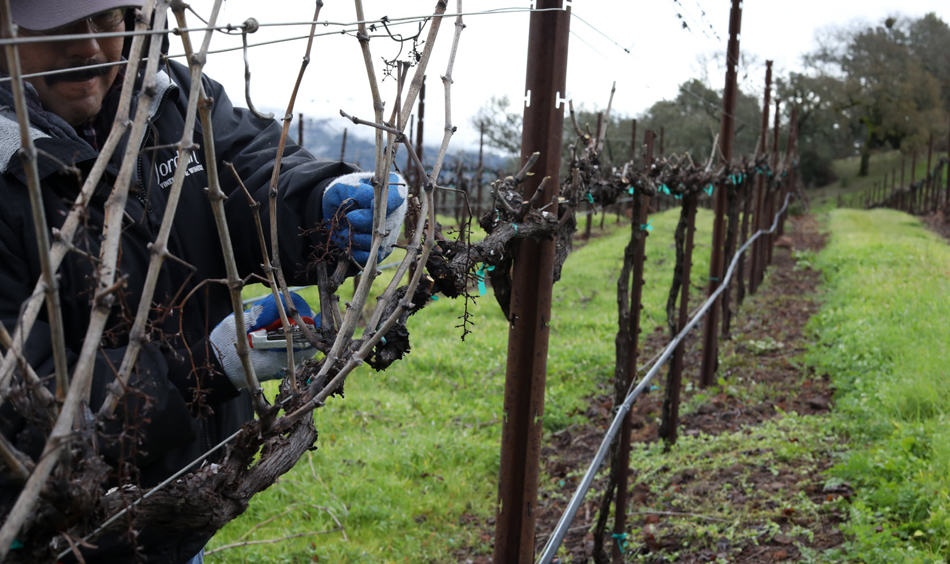
Photo from Jordan Winery
Flowers, Legumes and Grasses Amid the Mustard
Mustard, with its beautiful yellow blossoms, is the most familiar and eye-catching cover crop. But if you really know your plants, you may also spot fava beans or bell beans in the vineyard rows. Or, you might see rye grasses or oats, or a combination of both. In a few weeks, cover crops will be cut and then tilled into the soil. As the plants are tilled and decompose, the legumes’ organic matter provides additional nitrogen in a useable form to the vines, and the carbon-containing grasses help increase the soil tilth—the structure or looseness of the soil, which assists with proper moisture content. Depending on the soil type, one or both types of vegetation may be needed to maintain soil balance.
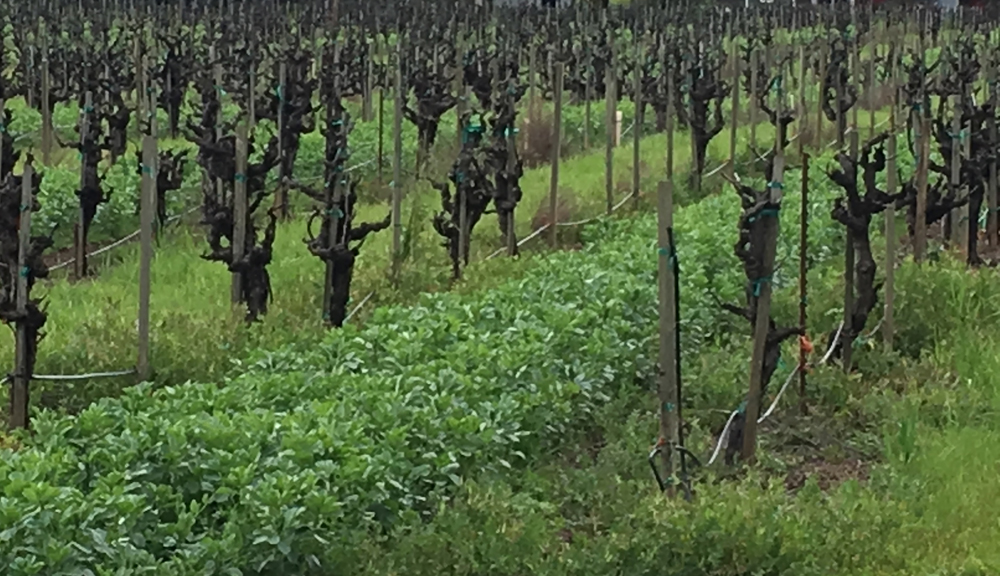
Sowing flowering plants between the rows attracts beneficial insects that prey on invasive species like mealybugs, mites, and other pests that can damage the vines. Plus, what insect (or photographer) can resist a vineyard of white, yellow, or orange flowers?
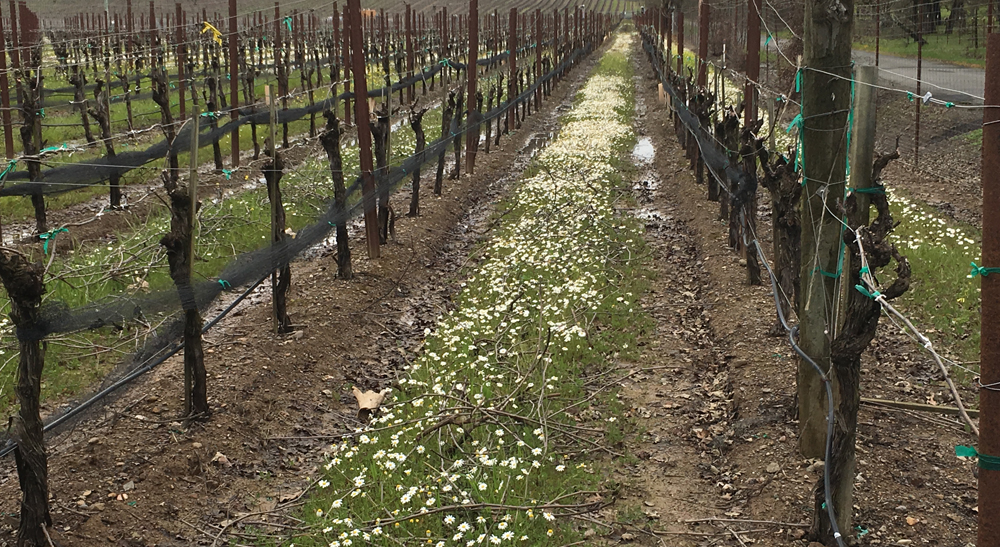
As for the mustard, we all love to see it in the vineyards along the Wine Road. Some of it is planted, but most of it volunteers to come back year after year. I recently read that even if you tried to remove all the mustard before it seeds each year, there is most likely 40+ years worth of seeds in the ground waiting for their chance to grow. That confirms that the spring mustard will be with us for a long time to come.
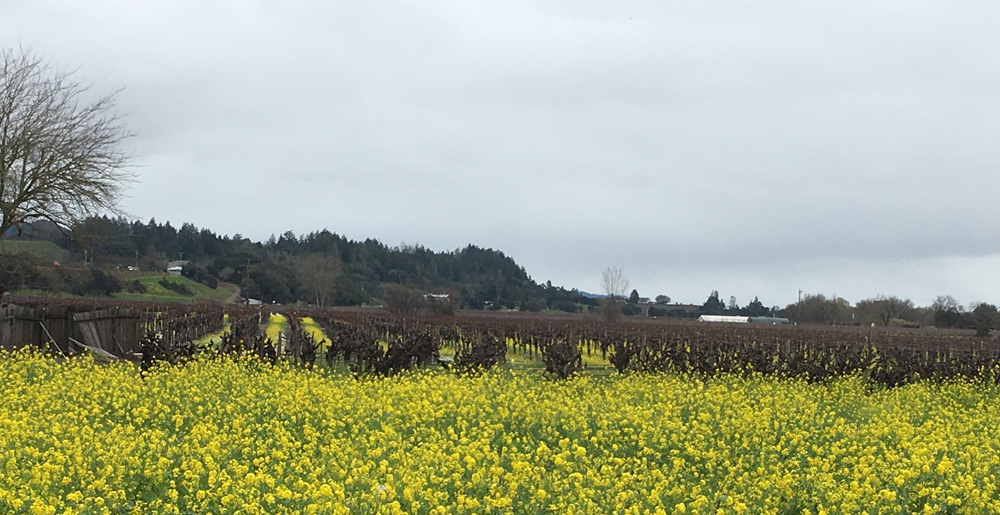
Just the Surface
There is so much more to know about cover crops and their many roles in supporting healthy vineyards. As I learned about cover crops, I was increasingly impressed at how much a vineyard owner or manager must know to select the right cover crop mix for each vineyard or vineyard block. Planting the wrong cover crop might upset the soil’s balance, which in turn might affect the grape production or quality.
Next time you gaze at a vineyard, I hope you enjoy its beauty. And, for a moment, remember those who work in that vineyard, know it intimately, and meticulously care for it so we can enjoy delicious wines year after year from along the Wine Road.
Happy Sipping!
#WineRoad #AlongTheWineRoad #WineRoadLife #SonomaCounty #CoverCrops #MustardFilledVineyards
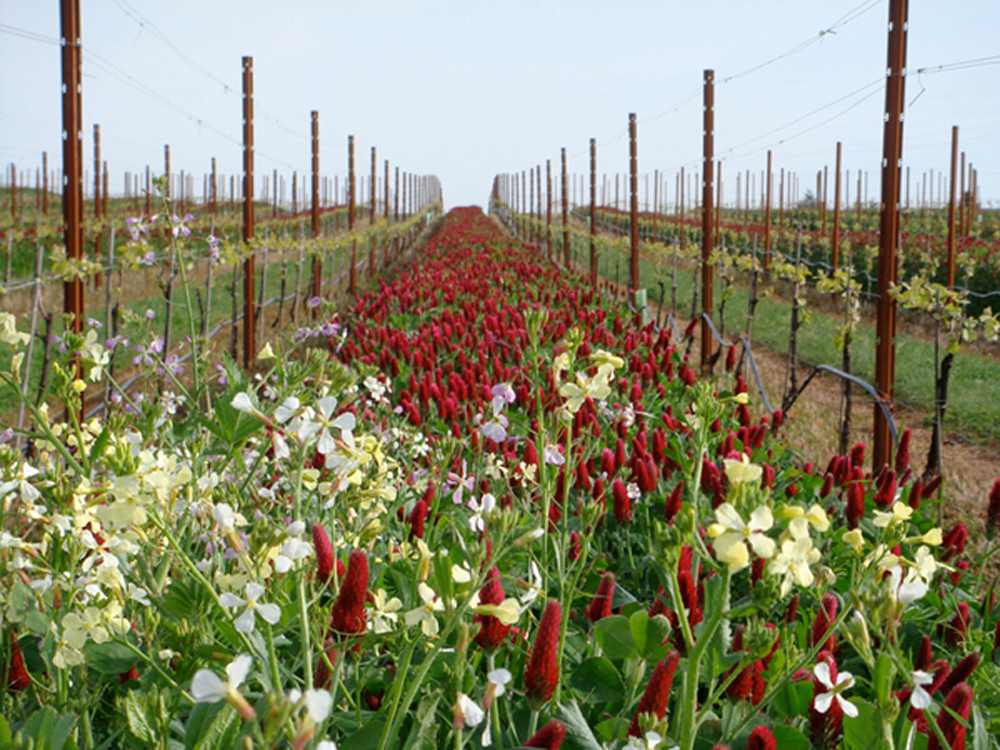




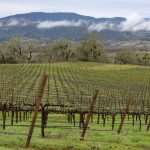

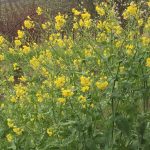

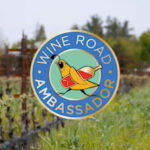
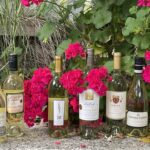
r7iw9o